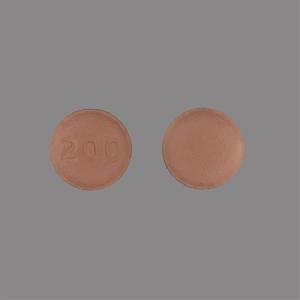Tiagabine Disease Interactions
There are 2 disease interactions with tiagabine.
Tiagabine (applies to tiagabine) liver disease
Major Potential Hazard, High plausibility.
Tiagabine is extensively metabolized by the liver. In patients with moderately impaired hepatic function (Child-Pugh Class B), the clearance of unbound tiagabine was reduced by about 60%. Therapy with tiagabine should be administered cautiously in patients with liver disease. Reduced dosages and/or longer dosing intervals may be necessary in these patients.
References
- Mengel H (1994) "Tiagabine." Epilepsia, 35 Suppl 5, s81-4
- (2001) "Product Information. Gabitril (tiagabine)." Abbott Pharmaceutical
Antiepileptics (applies to tiagabine) suicidal tendency
Moderate Potential Hazard, Moderate plausibility. Applicable conditions: Depression, Psychosis
Antiepileptic drugs (AEDs) have been associated with an increased risk of suicidal thoughts or behavior in patients taking these drugs for any indication. Pooled analyses of 199 placebo-controlled clinical studies involving the use of 11 different AEDs showed that patients receiving AEDs had approximately twice the risk of suicidal thinking or behavior compared to patients receiving placebo. AEDs should be administered cautiously in patients with depression or other psychiatric disorders; phentermine-topiramate should be avoided in patients with history of suicidal attempts or active suicidal ideation. The risk of suicidal thoughts and behavior should be carefully assessed against the risk of untreated illness, bearing in mind that epilepsy and many other conditions for which AEDs are prescribed are themselves associated with morbidity and mortality and an increased risk of suicidal thoughts and behavior. Patients, caregivers, and families should be alert to the emergence or worsening of signs and symptoms of depression, any unusual changes in mood or behavior, or the emergence of suicidal thoughts or behavior. If patients have symptoms of suicidal ideation or behavior, a dosage reduction or treatment discontinuation should be considered.
References
- (2002) "Product Information. Tegretol (carbamazepine)." Novartis Pharmaceuticals
- (2001) "Product Information. Klonopin (clonazepam)." Roche Laboratories
- (2001) "Product Information. Dilantin (phenytoin)." Parke-Davis
- (2001) "Product Information. Cerebyx (fosphenytoin)." Parke-Davis
- (2001) "Product Information. Mysoline (primidone)." Elan Pharmaceuticals
- (2005) "Product Information. Lyrica (pregabalin)." Pfizer U.S. Pharmaceuticals Group
- (2009) "Product Information. Sabril (vigabatrin)." Lundbeck Inc
- (2011) "Product Information. Potiga (ezogabine)." GlaxoSmithKline
- (2012) "Product Information. Fycompa (perampanel)." Eisai Inc
- (2016) "Product Information. Briviact (brivaracetam)." UCB Pharma Inc
- (2018) "Product Information. Epidiolex (cannabidiol)." Greenwich Biosciences LLC
- (2020) "Product Information. Xcopri (cenobamate)." SK Life Science, Inc.
- (2020) "Product Information. Fintepla (fenfluramine)." Zogenix, Inc
- (2022) "Product Information. Ztalmy (ganaxolone)." Marinus Pharmaceuticals, Inc
- (2022) "Product Information. Diacomit (stiripentol)." Biocodex USA, SUPPL-3
- (2023) "Product Information. Qsymia (phentermine-topiramate)." Vivus Inc, SUPPL-23
- (2023) "Product Information. Topamax (topiramate)." Janssen Pharmaceuticals, SUPPL-65
Tiagabine drug interactions
There are 322 drug interactions with tiagabine.
Tiagabine alcohol/food interactions
There is 1 alcohol/food interaction with tiagabine.
More about tiagabine
- tiagabine consumer information
- Check interactions
- Compare alternatives
- Pricing & coupons
- Reviews (7)
- Drug images
- Side effects
- Dosage information
- During pregnancy
- Drug class: gamma-aminobutyric acid reuptake inhibitors
- Breastfeeding
- En español
Related treatment guides
Drug Interaction Classification
| Highly clinically significant. Avoid combinations; the risk of the interaction outweighs the benefit. | |
| Moderately clinically significant. Usually avoid combinations; use it only under special circumstances. | |
| Minimally clinically significant. Minimize risk; assess risk and consider an alternative drug, take steps to circumvent the interaction risk and/or institute a monitoring plan. | |
| No interaction information available. |
Further information
Always consult your healthcare provider to ensure the information displayed on this page applies to your personal circumstances.


